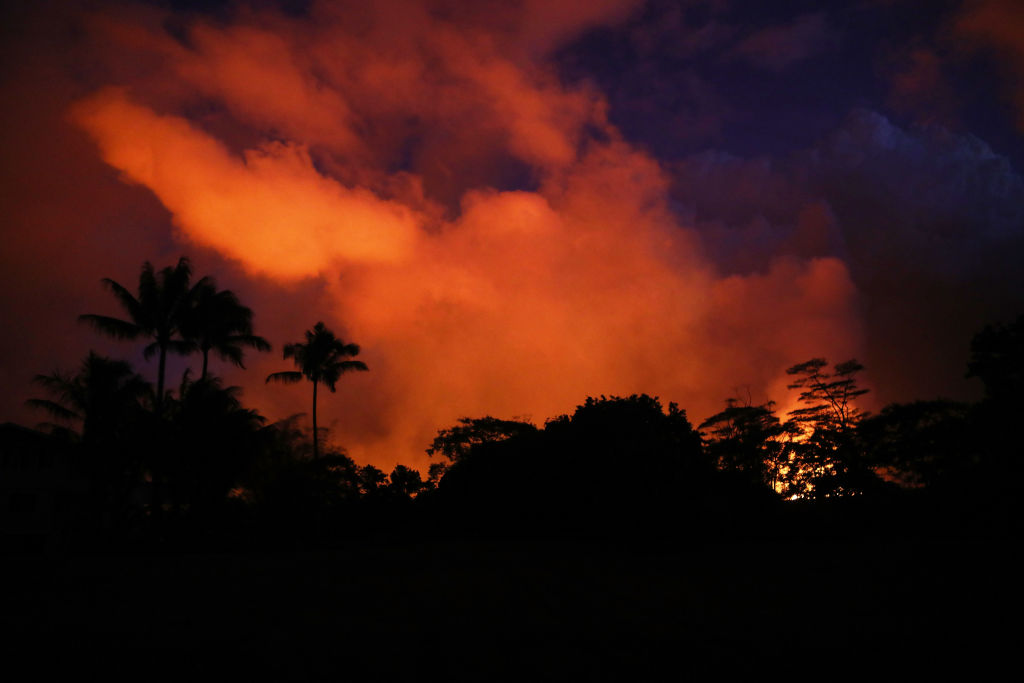This is why volcanic clouds move so fast

The dangers of volcanoes don't end at hot magma and falling rocks — you also have to worry about the plumes of ash, smoke, and toxic gases that are just as deadly, but reach a lot farther. Thanks to new research, scientists might be able to better understand how these volcanic clouds work, and how we can minimize their damage.
Clouds of volcanic debris, known as "pyroclastic density currents," have long been a mystery because they move much faster than they should be able to, National Geographic explained. They stick to ground level and seem to have an unnatural momentum that allows them to race downhill, on level surfaces, and even uphill. But a new study published Monday in the journal Nature Geoscience revealed that volcanic gases are able to spread at abnormal speeds thanks to a cushion of air that reduces the amount of friction they encounter in their path.
Using volcanic debris left behind by a volcanic eruption 2,000 years ago in New Zealand, researchers studied the way the pyroclastic flow moved, and were able to model the movement on computers. This data led them to the realization that air trapped between the toxic particles in the pyroclastic current drifted to the bottom of the clouds, buffering the current from any rough surfaces it might pass over. It's similar to the way an air hockey table works: The puck gains speed because of the layer of air that lifts it from the table's surface.
The Week
Escape your echo chamber. Get the facts behind the news, plus analysis from multiple perspectives.

Sign up for The Week's Free Newsletters
From our morning news briefing to a weekly Good News Newsletter, get the best of The Week delivered directly to your inbox.
From our morning news briefing to a weekly Good News Newsletter, get the best of The Week delivered directly to your inbox.
Although the data needs to be refined, it can be a tool in predicting where future eruptions' volcanic gases and ash might end up. That information, in turn, can be used to save the lives of the 800 million people who live within 60 miles of active volcanoes around the world.
Read more about this study at National Geographic.
A free daily email with the biggest news stories of the day – and the best features from TheWeek.com
Shivani is the editorial assistant at TheWeek.com and has previously written for StreetEasy and Mic.com. A graduate of the physics and journalism departments at NYU, Shivani currently lives in Brooklyn and spends free time cooking, watching TV, and taking too many selfies.
-
 Could a part-and-part mortgage help you on to the property ladder?
Could a part-and-part mortgage help you on to the property ladder?Combining repayment and interest-only mortgages could become more popular as part of a push towards more flexible lending
-
 Is social media over?
Is social media over?Today’s Big Question We may look back on 2025 as the moment social media jumped the shark
-
 Should parents stop tracking their kids?
Should parents stop tracking their kids?Talking Point Experts warn the line between care and control is getting murkier – and could have consequences
-
 Maduro pleads not guilty in first US court hearing
Maduro pleads not guilty in first US court hearingSpeed Read Deposed Venezuelan leader Nicolás Maduro and his wife Cilia Flores pleaded not guilty to cocaine trafficking and narco-terrorism conspiracy
-
 Iran’s government rocked by protests
Iran’s government rocked by protestsSpeed Read The death toll from protests sparked by the collapse of Iran’s currency has reached at least 19
-
 Israel approves new West Bank settlements
Israel approves new West Bank settlementsSpeed Read The ‘Israeli onslaught has all but vanquished a free Palestinian existence in the West Bank’
-
 US offers Ukraine NATO-like security pact, with caveats
US offers Ukraine NATO-like security pact, with caveatsSpeed Read The Trump administration has offered Ukraine security guarantees similar to those it would receive from NATO
-
 Hong Kong court convicts democracy advocate Lai
Hong Kong court convicts democracy advocate LaiSpeed Read Former Hong Kong media mogul Jimmy Lai was convicted in a landmark national security trial
-
 Australia weighs new gun laws after antisemitic attack
Australia weighs new gun laws after antisemitic attackSpeed Read A father and son opened fire on Jewish families at Sydney’s Bondi Beach, killing at least 15
-
 How Bulgaria’s government fell amid mass protests
How Bulgaria’s government fell amid mass protestsThe Explainer The country’s prime minister resigned as part of the fallout
-
 Benin thwarts coup attempt
Benin thwarts coup attemptSpeed Read President Patrice Talon condemned an attempted coup that was foiled by the West African country’s army